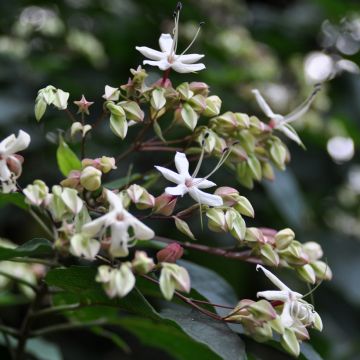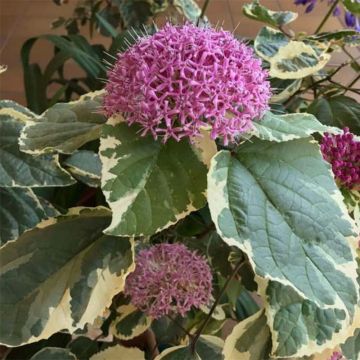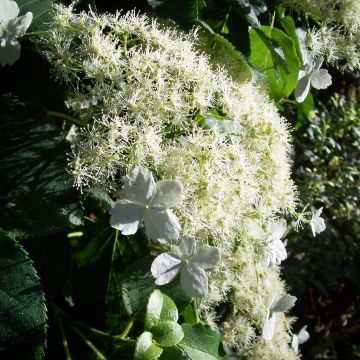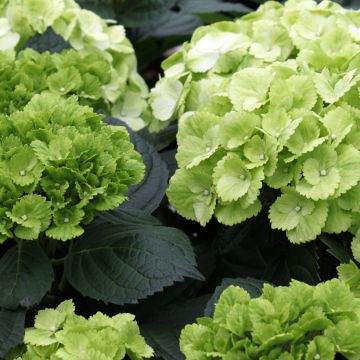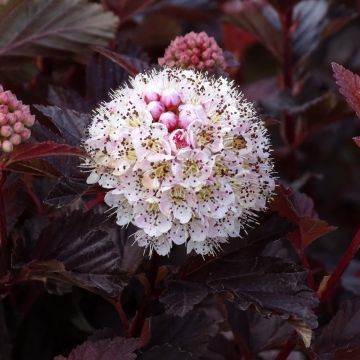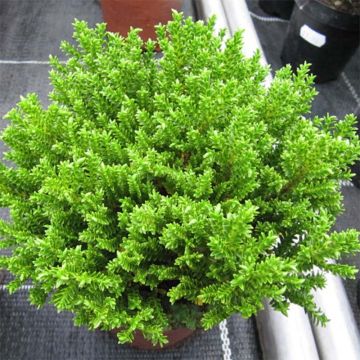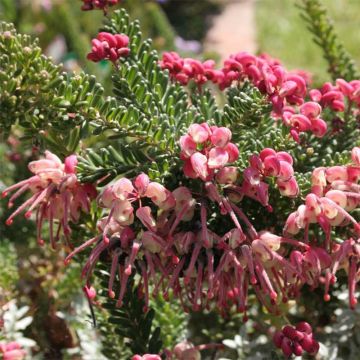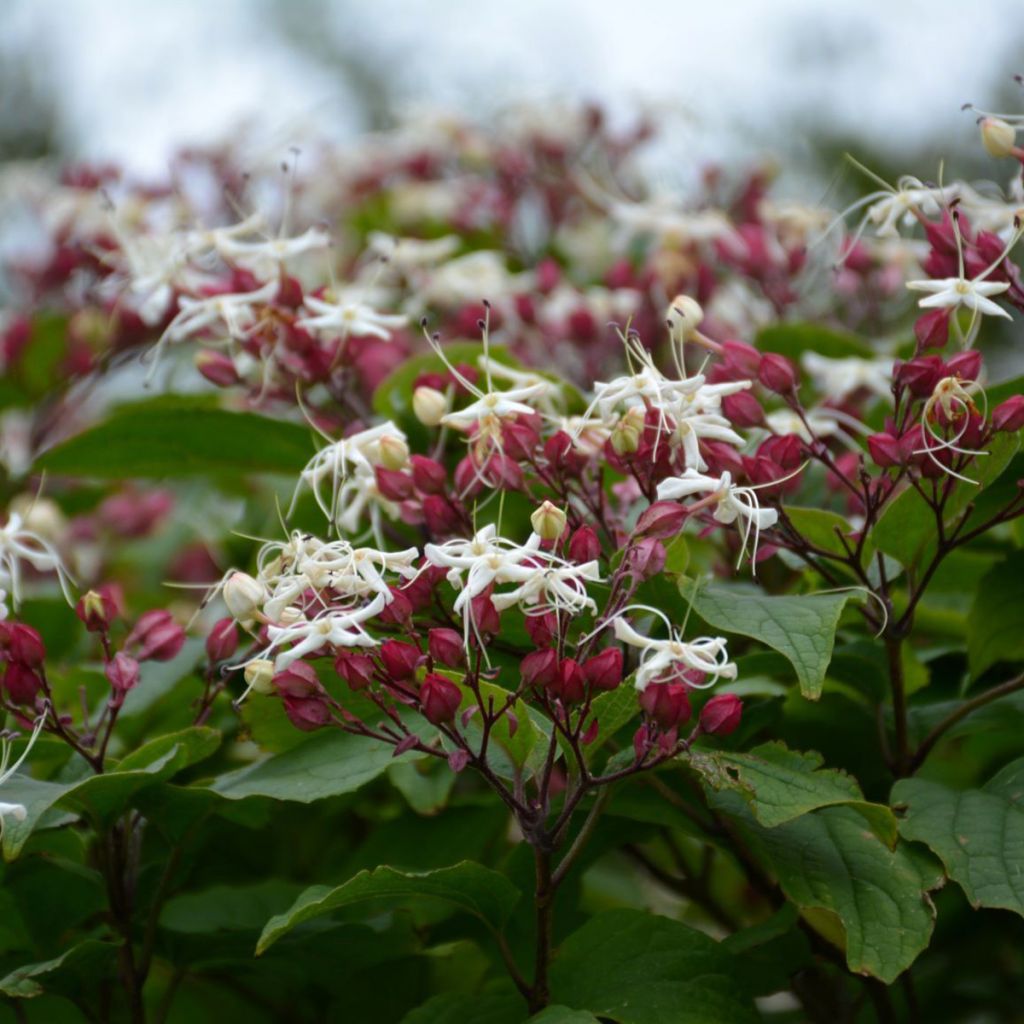

Clerodendrum trichotomum Purple Blaze
Clerodendrum trichotomum Purple Blaze
Clerodendrum trichotomum Purple Blaze
Harlequin glorybower, peanut butter tree
Special offer!
Receive a €20 voucher for any order over €90 (excluding delivery costs, credit notes, and plastic-free options)!
1- Add your favorite plants to your cart.
2- Once you have reached €90, confirm your order (you can even choose the delivery date!).
3- As soon as your order is shipped, you will receive an email containing your voucher code, valid for 3 months (90 days).
Your voucher is unique and can only be used once, for any order with a minimum value of €20, excluding delivery costs.
Can be combined with other current offers, non-divisible and non-refundable.
Why not try an alternative variety in stock?
View all →This plant carries a 24 months recovery warranty
More information
We guarantee the quality of our plants for a full growing cycle, and will replace at our expense any plant that fails to recover under normal climatic and planting conditions.
Would this plant suit my garden?
Set up your Plantfit profile →
Description
Clerodendrum trichotomum 'Purple Blaze' is a variety of Clergy Tree that distinguishes itself from the species by its young leaves tinged with purple. This admirable shrub or small tree is easy to grow in most regions. It has many assets, young coloured leaves then becoming large, velvety, beautiful bronze-green, late summer flowering with a pronounced jasmine scent, and finally, clusters of steel blue fruits surrounded by calyxes that turn red in late season. In addition to these ornamental qualities, it has a rapid growth rate.
Clerodendrum trichotomum is sometimes called "Peanut butter shrub", due to the scent of its crushed foliage resembling peanut butter. It is a shrub of the Lamiaceae or Verbenaceae family, depending on the classification. It is native to the mountains of Japan, as well as China, Korea, and India. Young plants are a bit sensitive to cold but a well-established plant will tolerate -15°C in well-drained soil.
The 'Purple Blaze' cultivar quickly forms a dense, upright, spreading small tree or large shrub. Some gardeners prune it to expose the 'trunk', forming a curious parasol-shaped crown. It will reach an average size of 3m in all directions. In this clerodendrum, the lower branches are slightly trailing, while the higher ones are upright. Its branches are covered with a dark grey bark dotted with lenticels that swell over time. They bear entire, 8 to 15 cm long, ovate leaves, with prominent veins and wavy or sometimes toothed edges. When they first emerge, the leaves are tinged with reddish-purple, then they turn green. Flowering generally occurs from August to September, depending on the climate, on the current year's growth. The shrub is adorned with terminal inflorescences in 10 to 20 cm long panicles filled with small tubular, star-shaped flowers with long protruding stamens. They are cream-white, slightly tinged with pale mauve, and enclosed in a purple-violet calyx. Their fragrance is reminiscent of jasmine and attracts numerous pollinating insects. The flowers give way to dark blue berries with metallic reflections surrounded by purple-red calyxes, which are very decorative. This fruiting varies depending on the year and the climate.
The Clergy Tree is a very beautiful shrub and its 'Purple Blaze' form is even more ornamental due to its coloured young foliage. It is interesting from spring to autumn. At the end of August until October, when most garden plants are finishing flowering, it brings a beautiful touch of fragrance and colour. The reputation for frost sensitivity of this clerodendrum is not justified, just as its cultivation requirements are often misrepresented: it is a tolerant plant in terms of soil and cold once established. It will bring an exotic touch to the garden, as a specimen, in an informal hedge, or a shrub border. It can be associated, for example, with the Honey Tree Euodia daniellii, botanical roses, a Red Cascade European Spindle, or the Persian Ironwood Parrotia persica. Also consider a grapevine with sumptuous autumn foliage. To appreciate the fragrance of the flowering Clerodendrum trichotomum 'Purpureum', place it near a living or walking area!
Report an error about the product description
Plant habit
Flowering
Foliage
Botanical data
Clerodendrum
trichotomum
Purple Blaze
Lamiaceae
Harlequin glorybower, peanut butter tree
Cultivar or hybrid
Other Clerodendrum
View all →Planting and care
The Purple Blaze Clerodendron trichotomum is best planted in spring or autumn. While young plants won't tolerate strong prolonged, frosts, well-established plants easily withstand -15°C. It is undemanding in terms of soil, adapting to any ordinary, deep, well-tilled, properly drained, even limestone soil. It prefers humus-rich soils that remain slightly moist in summer. Avoid scorching and overly dry exposures. It will prefer an east-facing exposure if summers are hot, as it requires moisture to flower and bear fruit. Plant it sheltered from the wind.
Plant Clerodendrum in a deep hole, in rich, moist and well-drained soil, sheltered from strong winds. Plant it in a mixture of garden soil, leaf compost and sand enriched with organic fertiliser (dried blood, crushed horn). Water generously during the first two years of planting, as well as during the growing season if the bush shows signs of water stress in its foliage (wilting leaves). Apply a slow-release fertiliser every spring.
Pruning consists of clearing the centre of the branches to allow light to enter, at the end of winter (March).
Cleodendrum is not particularly susceptible to diseases, although it may occasionally be attacked by scale insects, red spiders or whiteflies.
Planting period
Intended location
Care
This item has not been reviewed yet - be the first to leave a review about it.
Similar products
Haven't found what you were looking for?
Hardiness is the lowest winter temperature a plant can endure without suffering serious damage or even dying. However, hardiness is affected by location (a sheltered area, such as a patio), protection (winter cover) and soil type (hardiness is improved by well-drained soil).

Photo Sharing Terms & Conditions
In order to encourage gardeners to interact and share their experiences, Promesse de fleurs offers various media enabling content to be uploaded onto its Site - in particular via the ‘Photo sharing’ module.
The User agrees to refrain from:
- Posting any content that is illegal, prejudicial, insulting, racist, inciteful to hatred, revisionist, contrary to public decency, that infringes on privacy or on the privacy rights of third parties, in particular the publicity rights of persons and goods, intellectual property rights, or the right to privacy.
- Submitting content on behalf of a third party;
- Impersonate the identity of a third party and/or publish any personal information about a third party;
In general, the User undertakes to refrain from any unethical behaviour.
All Content (in particular text, comments, files, images, photos, videos, creative works, etc.), which may be subject to property or intellectual property rights, image or other private rights, shall remain the property of the User, subject to the limited rights granted by the terms of the licence granted by Promesse de fleurs as stated below. Users are at liberty to publish or not to publish such Content on the Site, notably via the ‘Photo Sharing’ facility, and accept that this Content shall be made public and freely accessible, notably on the Internet.
Users further acknowledge, undertake to have ,and guarantee that they hold all necessary rights and permissions to publish such material on the Site, in particular with regard to the legislation in force pertaining to any privacy, property, intellectual property, image, or contractual rights, or rights of any other nature. By publishing such Content on the Site, Users acknowledge accepting full liability as publishers of the Content within the meaning of the law, and grant Promesse de fleurs, free of charge, an inclusive, worldwide licence for the said Content for the entire duration of its publication, including all reproduction, representation, up/downloading, displaying, performing, transmission, and storage rights.
Users also grant permission for their name to be linked to the Content and accept that this link may not always be made available.
By engaging in posting material, Users consent to their Content becoming automatically accessible on the Internet, in particular on other sites and/or blogs and/or web pages of the Promesse de fleurs site, including in particular social pages and the Promesse de fleurs catalogue.
Users may secure the removal of entrusted content free of charge by issuing a simple request via our contact form.
The flowering period indicated on our website applies to countries and regions located in USDA zone 8 (France, the United Kingdom, Ireland, the Netherlands, etc.)
It will vary according to where you live:
- In zones 9 to 10 (Italy, Spain, Greece, etc.), flowering will occur about 2 to 4 weeks earlier.
- In zones 6 to 7 (Germany, Poland, Slovenia, and lower mountainous regions), flowering will be delayed by 2 to 3 weeks.
- In zone 5 (Central Europe, Scandinavia), blooming will be delayed by 3 to 5 weeks.
In temperate climates, pruning of spring-flowering shrubs (forsythia, spireas, etc.) should be done just after flowering.
Pruning of summer-flowering shrubs (Indian Lilac, Perovskia, etc.) can be done in winter or spring.
In cold regions as well as with frost-sensitive plants, avoid pruning too early when severe frosts may still occur.
The planting period indicated on our website applies to countries and regions located in USDA zone 8 (France, United Kingdom, Ireland, Netherlands).
It will vary according to where you live:
- In Mediterranean zones (Marseille, Madrid, Milan, etc.), autumn and winter are the best planting periods.
- In continental zones (Strasbourg, Munich, Vienna, etc.), delay planting by 2 to 3 weeks in spring and bring it forward by 2 to 4 weeks in autumn.
- In mountainous regions (the Alps, Pyrenees, Carpathians, etc.), it is best to plant in late spring (May-June) or late summer (August-September).
The harvesting period indicated on our website applies to countries and regions in USDA zone 8 (France, England, Ireland, the Netherlands).
In colder areas (Scandinavia, Poland, Austria...) fruit and vegetable harvests are likely to be delayed by 3-4 weeks.
In warmer areas (Italy, Spain, Greece, etc.), harvesting will probably take place earlier, depending on weather conditions.
The sowing periods indicated on our website apply to countries and regions within USDA Zone 8 (France, UK, Ireland, Netherlands).
In colder areas (Scandinavia, Poland, Austria...), delay any outdoor sowing by 3-4 weeks, or sow under glass.
In warmer climes (Italy, Spain, Greece, etc.), bring outdoor sowing forward by a few weeks.






























